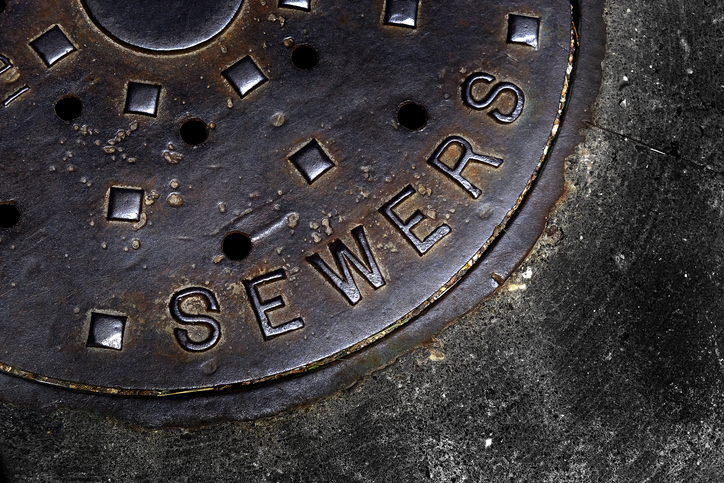What are Section 102 and Section 104 Agreements?
Lauren Walker, an associate in the Real Estate team, explains what Section 102 and 104 Agreements are and why they are used.
Both Section 102 and Section 104 Agreements relate to sewer adoption arrangements entered into with regional water and sewerage companies (“sewerage undertakers”). The distinction to note between the agreements is that Section 104 Agreements relate to the adoption of new sewers, whereas Section 102 Agreements relate to the adoption of existing sewers. Please note that if a sewerage undertaker covers areas in, or mainly in, Wales, the position and procedures are slightly different; this article focusses on undertakings and payments in England.
Section 104 Agreements – a brief outline
Any person or company who is constructing or proposes to construct a new sewer may request that a sewerage undertaker enters into a Section 104 Agreement to adopt the new sewer, so that the sewerage undertaker will then become responsible for maintaining the sewer at their own expense. The Section 104 Agreement will set out the standards and approved materials to be used in the construction of the sewers and apparatus to ensure the sewer meets a specific standard. If the sewer is then constructed in accordance with the terms of the agreement, the sewerage undertaker will, at a specified date once construction is complete, make a vesting declaration adopting the sewer. Such agreements can also relate to the drains that connect into sewers already vested in a sewerage undertaker or to sewage disposal works. There are many steps involved in the procedures for obtaining a Section 104 Agreement and we would recommend that you obtain advice early on if you are looking to obtain an agreement.
Section 102 Agreements – a brief outline
Any person or company may also submit an application to a sewerage undertaker requesting that they adopt a privately operating sewer which is already constructed and installed. Such agreements are usually put in place where new sewers are constructed and are operational before a Section 104 Agreement has been entered into, therefore voiding a potential Section 104 Agreement as the sewers are already in existence. When deciding whether to adopt the sewer and make a vesting declaration, the sewerage undertaking must consider all the circumstances in the case and take into account the following considerations:
- Whether the sewer or works are adapted, or will be required, for a general system of sewerage provided or proposed for the whole or any part of that location;
- Whether the sewer or lateral drain is constructed under a highway or under land reserved by a planning scheme for a street;
- The number of buildings which the sewer or lateral drain is intended to serve and whether, having regards to the proximity of other buildings or the prospect of future development, it is likely to be required to serve additional buildings;
- The method of construction and the state or repair of the sewer, lateral drain or works; and
- In a case where an owner objects to adoption, whether the making of a proposed vesting declaration would be seriously detrimental to the objecting owner.
Automatic adoption on 1 October 2011
It should be noted that the majority of private sewers and lateral drains in England and Wales which were connected to a public sewer as at 1 July 2011 were automatically adopted on 1 October 2011 pursuant to The Water Industry (Schemes for Adoption of Private Sewers) Regulations 2011. The intent of this was to help create uniformity in the standards of the sewers and drains on construction, due to fluctuating standards having an impact on those privately responsible for repair of the same. However, this does not mean that all sewers existing before that date are adopted.
Duties of sewerage undertakings
If you are looking to enter into one of the above agreements, or think that one may potentially be required, it is worth bearing in mind that there are duties imposed on sewerage undertakings by statute, including a primary duty (subject to certain conditions) to provide public sewers and lateral drains to connect a property to the sewer. The duty occurs where:
- The sewers and/or drains are required for domestic sewerage;
- The property consists of buildings, in whole or in part, or there are development proposals where buildings will be erected at the site;
- The property is in a location managed by the sewerage undertaker;
- Where the sewerage undertaker has been served with a notice from owners or occupiers of several premises in that area or the local authority to provide a public sewer and/or lateral drain; and
- Financial conditions imposed by the sewerage undertaker have been satisfied.
The requested sewer and/or drain connection should then be provided by the sewerage undertaker within 6 months of the later date of either the point at which the financial conditions have been satisfied or the date when connection to the public sewer is agreed.
The financial contributions referred to above can include requests that those who will benefit from the agreement contribute towards the cost of providing the new sewers and/or lateral drains and also give the sewerage undertaker security for these costs.
There are further duties imposed on sewerage undertakers where existing buildings have an existing means of drainage for domestic purposes that is, or is likely to have, such adverse effects on the environment or amenity that it is deemed more appropriate for a public sewer to be provided (subject to specific considerations not detailed here).
Rights over third party land to enable connections
It should not be overlooked that where third party land separates new sewers or drains from existing infrastructure and where new sewers and drains will pass over third party owned land, either the sewerage undertaker or the person requesting connection will need to obtain the necessary legal rights to install the new infrastructure and also relevant rights in respect of access and entry to repair, maintain and inspect the infrastructure. The most effective method to do this is to enter into a deed of easement with the relevant third party owner whereby they grant the necessary rights. Entering into a lease is another common means of dealing with access issues. If the third party owner is uncooperative, there are compulsory purchase powers conferred on sewerage undertakers which may aid in dealing with this, which they will ordinarily be reluctant to use; a documented agreement with the third party landowner is the normal means of dealing with this.
Considerations for a property purchaser or developer
When purchasing or developing a property, the proposed purchaser or developer may wish to consider the following:
- Raising a drainage and water search with the appropriate undertaking (which we would always advise it is prudent to undertake when purchasing or developing a property in any event), which includes enquires around whether such agreements are already in place and what means of sewerage and drainage exist (if any);
- In the case of Section 104 Agreements, early discussions with the relevant undertaker where an agreement will potentially be required, so that this does not stall any proposed development works due to delay;
- What costs will be involved; this will depend on the extent of any works required and the nature of them, the existing infrastructure already in place (or lacking, as the case may be), the distance between the proposed connection to existing infrastructure and the property, material and labour costs and the timescale which is proposed;
- Whether any rights and easements are required in order to connect into the infrastructure;
- If an existing sewer or ancillary infrastructure are not already adopted, why is this the case and what enquiries are required to establish this? It may be that the construction is not in line with national standards, that the level of disrepair is too great, or that the location is problematic for example in respect of rights of access; and
- In the event that disputes arise, disputes are (or should be) referred to the regulatory body, the Water Services Regulatory Authority (Ofwat), to determine the dispute or refer it on to arbitration.
If you are looking to purchase or develop property or are encountering any issues in respect of the above and would like to discuss this with a member of our Real Estate team, please do not hesitate to contact us.
This article forms one of a series of planning articles we have released. Please see the other related articles as follows:

